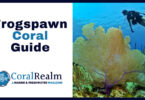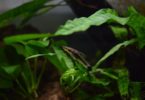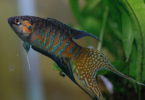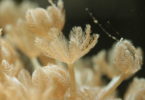Last Updated on February 10, 2023 by Matt
The cherry shrimp, also known as the red cherry shrimp and scientifically named as Neocaridina heteropoda; are small shrimp native to Taiwan. Belonging to the Atvidae family, these invertebrates are a peaceful and popular choice for aquatic enthusiasts. They are suitable for both beginner and experienced fish owners due to their durability with water conditions and gentle nature, they are never considered aggressive and even fail to defend themselves when faced with a threat.
Cherry shrimp are calm and peaceful dwarf shrimp that are active at all time throughout the night and day, making them a fun addition to watch forage around the aquarium. They are usually seen grazing on left over food in the substrate or algae on the plants, they also shed their exoskeleton which can sometimes be seen if you are lucky enough to catch it. Their shed can be left in the aquarium as it provides the right minerals for them to later consume!
These shrimps can be housed in many different aquariums; however, they are known to thrive in planted tanks with hiding spots and places to explore or shelter. They are commonly referred to as algae eaters due to their eating and cleaning habits such as foraging in aquarium plants and substrate. However they can bring so much more to their environment, particularly their cherry red color.
IN THIS ARTICLE
Quick Cherry Shrimp Care Summary
| Cherry Shrimp summary | |
| Family | Atyidae |
| Care level | Very easy |
| Temperament | Peaceful |
| Lifespan | 1-2 years |
| Size | 1.5 inches |
| Color | Red |
| Diet | Omnivore |
| Minimum tank size | 5 gallons |
| pH levels | 7.0-7.5 |
| General hardness | 7-15 dGH |
| Carbonate hardness | 0-10 dKH |
| Temperature range | 68-75 |
| Compatibility | Other shrimp, snails, and peaceful fish |
| Tank set up | Tropical freshwater tank |
Appearance
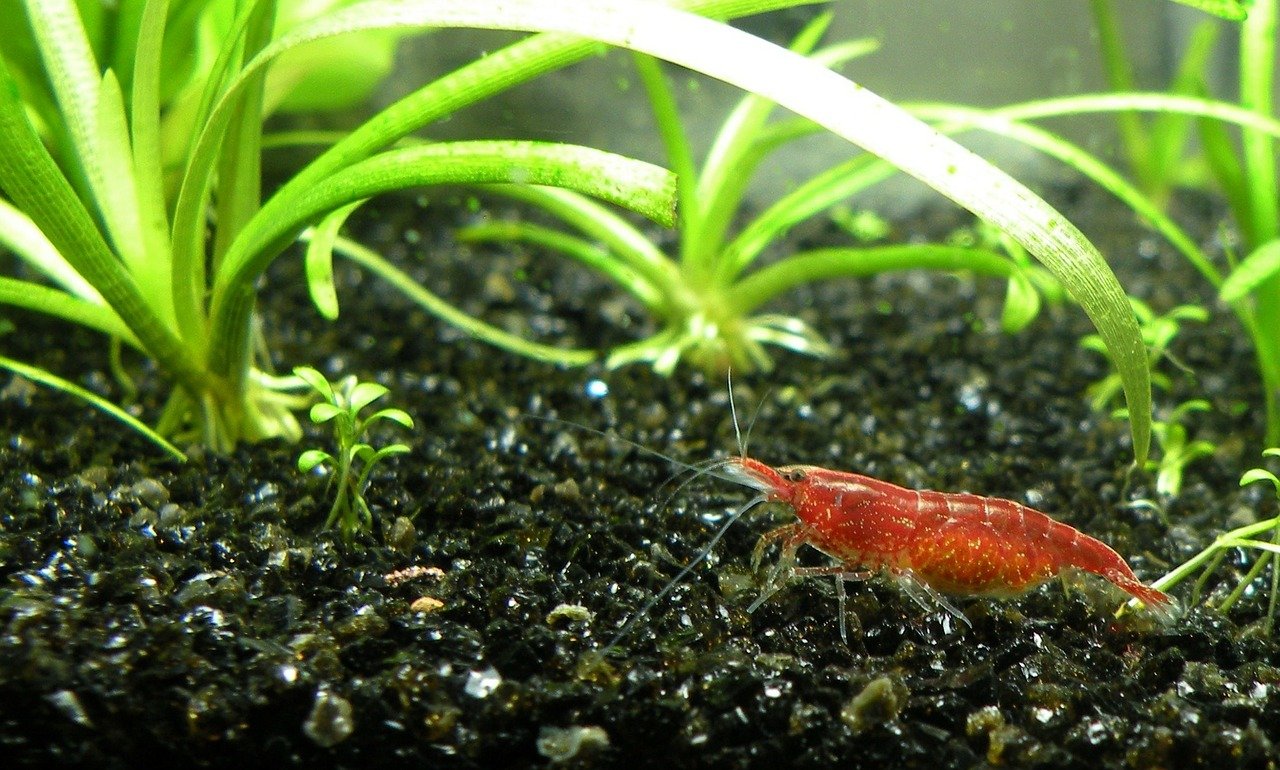
Cherry shrimp actually come in a variety of colors in the wild, however in captivity they are generally a red color due to selective breeding. They are pretty small in size with the average female being around 1.5 inches long, males are slightly smaller. Even with their small size and foraging habits, they are always easy to spot in their surroundings due to their beautiful red coloring, their colors come in grades, with some being vibrant and others paler:
Clear with a red tint and red patches – Cherry Shrimp
Darker red with clear patches – Sakura Cherry Shrimp
Red all over – Fire Red Shrimp
Deep red body and legs – Painted Fire Red Shrimp
To sex cherry shrimp, you need to pay attention to their size and color, as females are more vibrant in color and tend to be slightly larger than the males. Females also develop an orange tinted sack in their stomach that will hold the eggs during breeding.
Housing
Cherry shrimp can be housed in many different aquariums; however, they have been known to thrive in a large group in a shrimp only tank, we recommend keeping at least 8-10 in one enclosure. The size of the tank depends on how many shrimps will be kept together, these shrimps can live in a tank as small as 5 gallons, however the more space they have the more foraging opportunities they will have. If you have a large group of cherry shrimp, it is best to keep them in a slightly larger tank as they can breed pretty quickly if kept in the correct breeding conditions, this can often happen by accident and the shrimp can multiply sooner than you would want.
If you intend to keep a colony of cherry shrimp, we recommend a 20-gallon tank to be the minimum size, and larger depending on any other species you are keeping alongside them. With these shrimps, the larger the group the more comfortable they will be in their surroundings, shrimp housed on their own will be much less confident and will hide away for most of the time. Housing them in a large group is a great way to see their natural behaviors that they would exhibit in the wild.
When setting up a cherry shrimp aquarium, one of the most important factors to consider is where they are found in the wild, as replicating this environment will benefit their welfare and behavior. As these shrimps are found in East Asia living in ponds and streams, adding in lots of live plants and rocks will help create the tightly packed vegetation found in this habitat. Creating small hiding spaces through stacking rocks and adding in moss and driftwood will allow them to hide away and forage for food.
Water conditions and temperature
Cherry shrimp are pretty hardy invertebrates and can withstand various temperatures and pH levels, however they do have parameters that they are more comfortable with and thrive in. The pH can range from 7.0-7.5 at a comfortable level, however they can still live in 6.5-8.0, we recommend trying to keep the pH levels neutral of around 7.
In terms of water temperature, these shrimps will grow and breed much more quickly in warmer waters of upper 70 to low 80. Even though this can sound beneficial to shrimp owners, warmer water can decrease the length of their life. We recommend keeping your cherry shrimp at around 72 degrees Fahrenheit, with a range between 68-75 degrees Fahrenheit, this will prolong your shrimp’s life and help prevent any rapid breeding.
Even though they can survive different temperatures and pH levels, they can be sensitive to water hardness and the water conditions. Cherry shrimp prefer harder water with stable water conditions, this means preventing any high levels of ammonia, nitrite, or nitrate. General water hardness should stay between 7-15 dGH, and carbonate hardness should stay between 0-10 dKH.
As long as the water conditions and parameters stay consistent, cherry shrimp can withstand various conditions. A great way to maintain the water conditions in a cherry shrimp aquarium and ensure they stay healthy is to use aquarium test strips or test kits. This measures the parameters in the water and will tell you the levels of each substance, you can then evaluate if any are too high and too low for the species in the aquarium.
We always recommend the same two methods using either test strips or a chemical test kit as they are the most reliable:
Aquarium test strips
These water test strips are a quick and easy alternative to the master test chemical kits, complete with four strips and a chemical chart. One of these strips is to be placed into the water for a short amount of time and the colors on the strip should then be compared to the color chart – this will then accurately tell you the levels of pH, nitrite, nitrate, carbonate, and general water hardness.
Master test kit
- Contains one (1) API FRESHWATER MASTER TEST KIT 800-Test Freshwater Aquarium Water Master Test Kit, including 7 bottles of testing solutions, 1 color card and 4 tubes with cap
- Helps monitor water quality and prevent invisible water problems that can be harmful to fish and cause fish loss
- Accurately monitors 5 most vital water parameters levels in freshwater aquariums: pH, high range pH, ammonia, nitrite, nitrate
- Designed for use in freshwater aquariums only
- Use for weekly monitoring and when water or fish problems appear
This master kit is a more advanced alternative to the testing strips, with 7 bottles of testing solutions, 1 color card and 4 glass tubes. This kit will measure the pH, high range pH, ammonia, nitrite and nitrate, this kit may give you a more accurate result, however there is more of a risk of disrupting the process by putting too many or too little drops in the test tubes.
What To Feed Cherry Shrimp
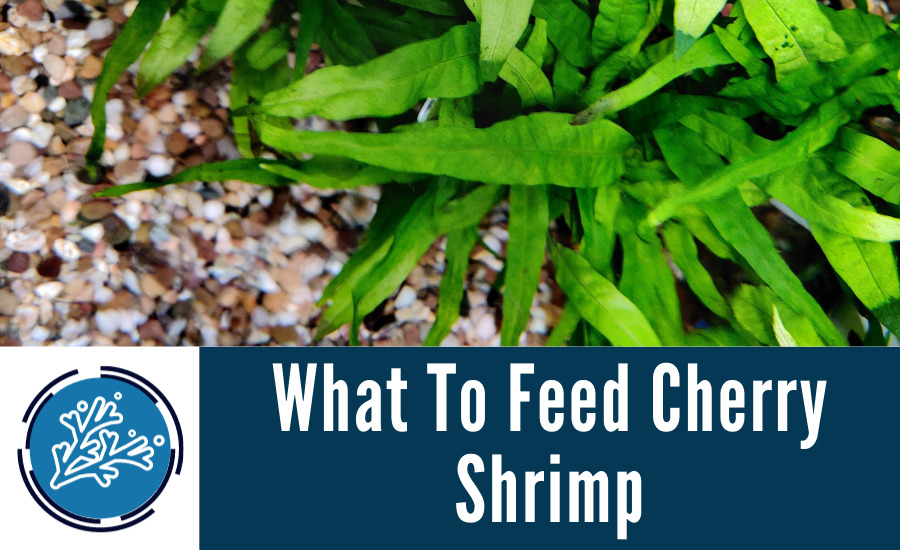
Cherry shrimps are natural born scavengers and will consume any plant or animal matter in the water and the substrate. They are omnivores and are always found foraging both in the wild and in captivity. Due to this behavior, they are very simple to feed and don’t require too much specific attention to food types.
They are easy to feed if housed with other feed as they can eat the same foods given to them, including flakes, pellets for both fish and shrimp, and algae wafers. There are several brands of fish food that make food specifically for shrimp/invertebrates, so we recommend feeding your shrimp these, however they will survive perfectly well on fish food.
A great way to supplement their diet is to offer them vegetables, these can be boiled before putting into the tank. Some shrimp safe vegetables include carrots, lettuce, spinach, and cucumber; make sure that you are not putting too many vegetables into the tank as this will just pollute the water, remember that shrimps are very small and don’t require loads of food at once. They will consume a large amount of plant matter from your tank on plants, in the substrate and on any rocks or hides. However, don’t mistake these small shrimps for perfect tank cleaners, as they won’t make a huge difference to the look of your aquarium compared to what larger fish such as plecos would do. We recommend removing any eaten food after a few hours to prevent any harmful water pollution.
Another source of food are Indian almond leaves and cholla wood, these encourage the build up of bacteria on them which the shrimp then feed on.
Cherry Shrimp Tank Mates
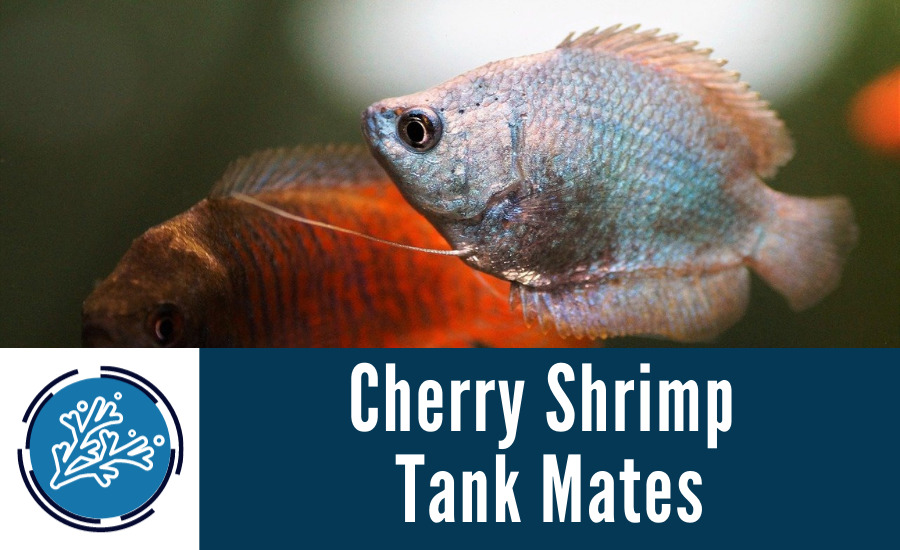
Cherry shrimp are very peaceful and completely non-aggressive, they also have no defense mechanisms to protect themselves if they do get attacked. This means that they are better off living with other peaceful species that won’t harass, intimidate or attempt to eat them. The first factor to consider is that they need to be housed in a group of cherry shrimp together, you can have multiple groups of different shrimps such as the Ghost shrimp and Amano shrimp, but it isn’t advised to keep one of each species together in one group. Cherry shrimp are compatible with snails such as Ivory snails, Gold Inca snails, Ramshorn snails and Malaysian Trumpet snails. Some other compatible tank mates include:
- Cory catfish
- Otocinclus catfish
- Plecos (smaller types such as the bristlenose, avoid the common pleco)
- Tetras
- Dwarf gouramis
Even if you have fish that are compatible with your cherry shrimps, it is important to have lots of plants and hiding spots for your shrimp you ensure they don’t get eaten.
Any fish that are large in size and big enough to eat them should be avoided, also those that have a reputation for being aggressive or territorial. Here are some to be avoided:
- Discus fish
- Bettas
- Arowanas
- Cichlids
- Oscars
Enrichment
There are many species of fish that benefit from enrichment strategies to improve their health and welfare, allowing them to exhibit more natural behaviors. However, shrimp don’t require too much stimulation in their aquarium, the main thing to research and add into the tank are plants, substrate and hiding places.
A great way to change their enclosure and give them the best habitat is to have several layers in their tank, with moss logs, stones, rocks, wood, plants and hides for them to climb on and forage through. Here are some ideas that we recommend to add into you shrimp aquarium:
Capatta leaves (Indian Almond leaves) – These leaves are commonly used in shrimp and betta aquariums, they provide a great source of food as well as creating a hiding spot for shrimps. They also add a colored tint to the water which is a great way to make your aquarium more natural looking. Due to their healing and pH balancing properties they are worth putting in the tank purely to maintain the water quality.
- Give a stress-free home to your pets --- You know when fish aren’t given the required environment, they come under extreme stress. Soon you will...
- Shield Your Beautiful Betta --- More common in uncycled tanks and small bowls, fin rot begins to eat away a betta fish’s beautiful fins. Be careful...
- Miracle Leaves Keep Betta In An Optimal State --- Fin rot, sometimes called fin melt or tail rot, is fairly common. It is caused by things that exist...
Hides and caves:
Cholla wood:
- NATURAL CHOLLA WOOD | Fertilizer and Pesticide Free | Completely safe for all our animal friends
- Great for Shrimp tanks, tying moss to, great for Hermit Crabs
- Small Shrimp and Fry will enjoy swimming in and around. Excellent hiding places for vulnerable babies.
- This Cholla wood has been cleaned and sustainably sourced. It is also sourced from a pesticide free location. Boiling prior to use will help increase rate at which the wood will sink
Cherry Shrimp Breeding
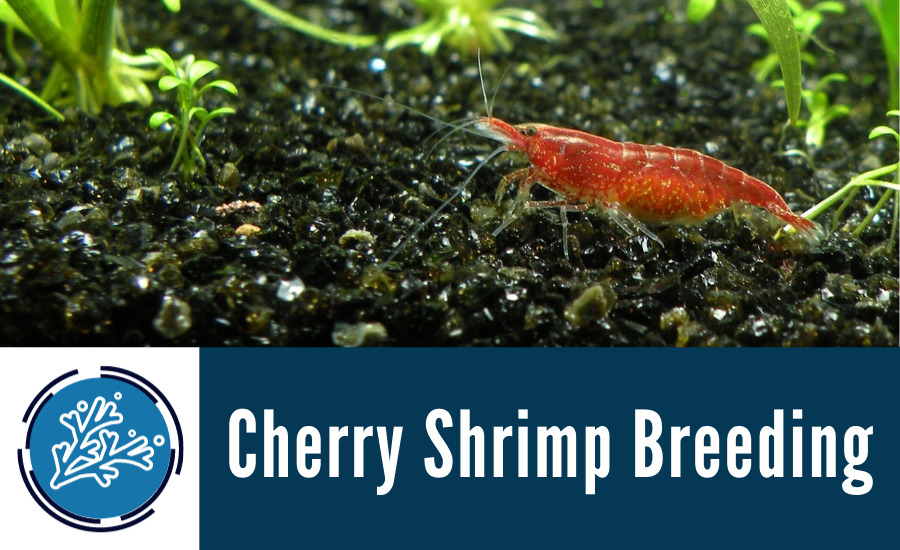
Luckily, cherry shrimp are one of the easiest species to breed, as long as they are in a suitable environment. Breeding shrimp is a much simpler process than breeding fish, if you are looking to breed multiple shrimp, it is best to have a separate shrimp only tank with the conditions that are best for them.
The first step in breeding these shrimp is to prepare their enclosure. The tank should be packed with live plants and hiding spots for the shrimp to replicate their natural environment as much as possible, putting in some catappa leaves will help with this. You will then need to ensure that the water is free from any harmful chemicals through using a water conditioner and going through the simple steps of setting up a new enclosure. The water temperature can be raised to around 82 degrees Fahrenheit, this will encourage them to breed as their natural breeding season in the wild is during the summer. If you are using an external filter that has an outtake water nozzle, you will need to cover the hole with a sponge so that the baby shrimp won’t get sucked up into the filter.
Ensure you feed the shrimp regularly with high quality food packed with protein, however don’t add too much into the tank as it could pollute the water. It usually takes a while for the shrimp to settle into a new enclosure and feel the need to breed, this can sometimes take a few months; the shrimp hit sexual maturity at 4-6 months old.
Observing the mating process is difficult and not usually seen, however it will be clear when the female is carrying her eggs as you will see them underneath her tail. The female will move her time occasionally to give oxygen to her eggs, from this stage expect the eggs to hatch in around 30 days. It is important not to move the baby shrimp from the enclosure into a new one as they rely on the cycled water and good bacteria so feed on, a newly cycled and filled aquarium will be too much for the babies.
The baby shrimp will fend for themselves and forage for food, you can always rely on the live plants to give the babies a good source of food, anacharis and cabomba are good plants for this, they also provide good hiding spaces for the babies.
Common health issues
Shrimp are an animal that many people think they can put into a tank and forget about, however they still have requirements just like any other species, and they can also carry diseases.
There’s a few ways that cherry shrimp can get sick, one being if you have bought an already infected shrimp from the store or breeder. This is more common when you buy a shrimp from the store as breeders would not usually sell an infected shrimp to you as they have more contact with them. If you introduce an infected shrimp into your aquarium, any parasites they have can be passed onto your healthy shrimp or fish. This can also happen if you buy a new live plant that is carrying hidden parasites or eggs, as these then leave the plant and find home in your shrimp and fish. Another reason why shrimps can develop diseases or issues is due to incorrect water conditions and temperatures, even though shrimps don’t require warm water, if the water is too cold it gives unwanted bacteria and parasites a great place to multiply.
One parasite that is quite common in cherry shrimps is known as Vorticella, that looks like a white fungal growth on the shrimps body, usually around the nose. The main symptom is the white fungus looking growth on their body.
This parasite needs to attach itself to a carrier, so removing the fish into a separate enclosure to treat, and then cleaning the water and plants will get rid of the parasite. By placing the shrimp into a separate quarantine enclosure it can give you a chance to begin treating them. You can either add aquarium salt to the quarantine enclosure, or put them in a small pot for a few minutes that has aquarium salt in it, known as a salt bath. To do this, put 1 tsp of salt to 1 cup of water and mix well, get aquarium salt here:
- Contains one (1) API AQUARIUM SALT Freshwater Aquarium Salt 67-Ounce Box
- Promotes fish health and disease recovery with increased electrolytes
- Improves respiration for fish in freshwater aquariums
- Made from evaporated sea water for all-natural results
- Use when changing water, when setting up a new freshwater aquarium and when treating fish disease
If the salt bath doesn’t work, a parasite medicine can be used in both the quarantine tank and the main tank, we recommend seahchem’s parasite medicine:
- Does not adversely affect the filter bed and is easily removed with carbon
- Will treat both internal and external infections regardless of the delivery method
- Can either be dosed into the water or combined with Focus in a medicated food mix
- An effective and safe treatment for several protozoan and anaerobic bacterial diseases of fish
- When used in a medicated food mix, it is excellent for treating parasites in tanks that contain invertebrates
Make sure you mix the suggested amount of medicine in the water you prepare before adding it into the aquarium so that it is mixed in properly.
Here is another medicine that is also suitable:
Another common parasite seen in cherry shrimps is known as the Scutariella Japonica, this is a more harmful and serious parasite that needs immediate treatment. This parasite is similar to a flatworm in its body. They live inside the gills of the shrimp and you will be able to see the bacteria between the shrimp’s eyes and possibly on its body. These parasites also lay eggs on the shrimp, making the problem much worse, luckily these cherry shrimps can get rid of the parasite when they molt their exoskeleton. However, the shrimp then consume the exoskeleton, which just gives the parasite back to them, if they don’t eat their molt, it will create a home for the parasite until it finds another host.
Even though they are quite severe, they won’t kill the shrimp unless multiple parasites infect one shrimp at a time, as it created breathing difficulties to the shrimp.
The parasite is visible as easy to spot, they are 1-3mm in length and are white in color, usually around the shrimp’s head area.
To treat this parasite, you can use the same methods that you would with the vorticella parasite, including a salt bath and parasite treatments. However, the salt bath doesn’t get rid of the eggs, whereas the molting of the exoskeleton does. So to remove the eggs make sure you are monitoring the tank regularly to remove the exoskeletons. Do this for a few weeks to ensure all of the eggs have gone.
Are cherry shrimp right for you?
Cherry shrimp are a great addition to a community tank or in a shrimp only aquarium if you are willing to give them the care they need. If you house peaceful community fish and want another small but beautiful addition to widen the variety, cherry shrimps and a great option.
As long as they are provided with clean water and places to hide and forage, they don’t need too much care and maintenance to life out their full life. Regular water changes are essential to providing the clean water they need. Water changes can be made easier using a product like the Python water changer.










